
Layout, design and features …
Here you can see the front of the 2.5″ Crucial BX500 240GB, 480GB and 1TB SSD

The back side shows the label of the 2.5″ Crucial BX500 SSD with some technical data and the firmware version M6CR013, M6CR013 and M6CR030, which is pre-installed. The two SATA3 connections for power supply and data connection can be seen in the following picture on the left side.

Like the Crucial MX500, MX300, MX200, BX300, BX200, BX100 and MX100, the BX500 SSD is manufactured in the flatter height, which in contrast to the predecessor SSDs is only 7mm and no longer 9.5mm. However, a corresponding 7mm to 9.5mm adapter frame is no longer included with the BX500.
The case of the Crucial BX500 SSD was pressed together without screws. Nevertheless, we managed to open the SSD carefully to allow a look at the BX500 board, which surprisingly doesn’t even come close to filling the SSD case. Whereby it’s not really astonishing, since Crucial uses 64 layers for the smaller capacities up to 480GB and 96 layers NAND for the 1TB and 2TB BX500 SSDs. Here you can see the small SSD board in the case together with the SSD lid. You can also immediately see that the back of the board is completely unpopulated.
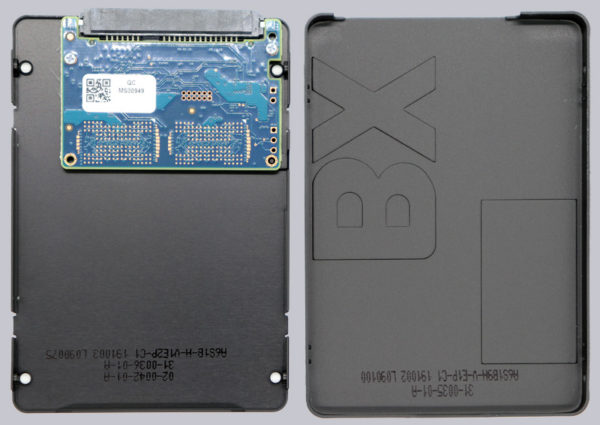
On the back you can see the two (with thermal pads equipped) Micron NX894 96 Layer 3D TLC NAND devices of the SATA3 SSD with 1TB capacity and the Silicon Motion SM2259XT controller IC. For the smaller BX500 SSDs up to 480GB Crucial uses the Silicon Motion SM2258XT Controller IC. A Micron D9STQ 1GB cache device is missing completely, because it is not included in the Silicon Motion XT Controller ICs!
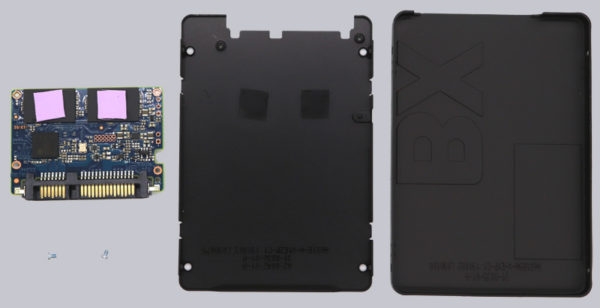
We have already explained the differences between TLC, SLC and MLC in detail in the Windows Practical testing of the Crucial BX200 480GB SSD. The MX300 was equipped with the 3D TLC NAND and the BX200 was equipped with simple TLC NAND, which could only maintain high write performance via the SLC cache size. As we will see in the benchmarks, Crucial was able to find a good solution for this with the BX500. Here you can see again the Silicon Motion SM2259 XT Controller IC and the two 96 Layer 3D TLC NAND ICs.
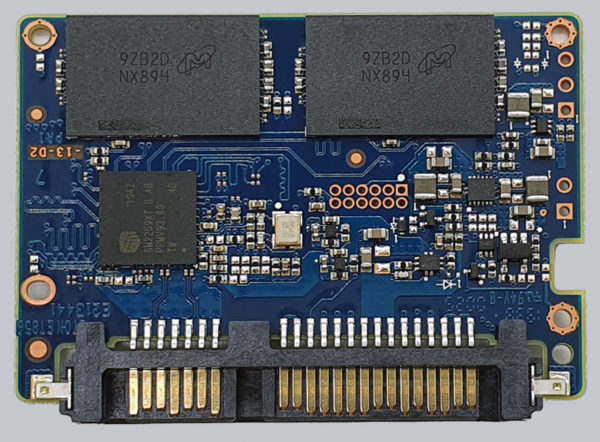
After the construction of the Crucial BX500 240GB, 480GB and 1TB SSD we now come to the firmware update.
SSD Firmware Update …
The BX500 240GB and 480GB SSD was delivered with the M3CR013 firmware. The BX500 1000GB SSD was delivered with the M3CR030 firmware. Crucial provides this firmware version for the BX500 as the latest SSD firmware. With the new Crucial Storage Executive Tool you can update the firmware of the SSD relatively easy, but as always you should backup important data before the firmware update. You can usually also use the classic method: Download Crucial Firmware, unzip the contained ISO file, transfer the ISO file with unetbootin to a USB stick (alternatively burn it to a CD or CDRW), boot with the USB stick and the firmware update starts.
The Crucial Storage Executive Tool can be downloaded from the Crucial website and is quickly installed or in our case updated to the latest version 5.09.122019.04.
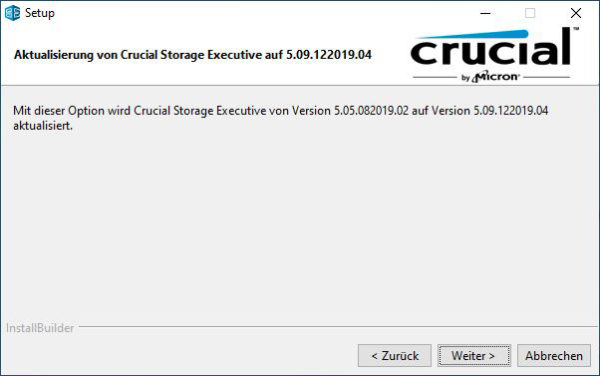
The Crucial Storage Executive Tool clearly shows which SSDs and hard drives are installed, what the SMART values look like and updates the firmware.
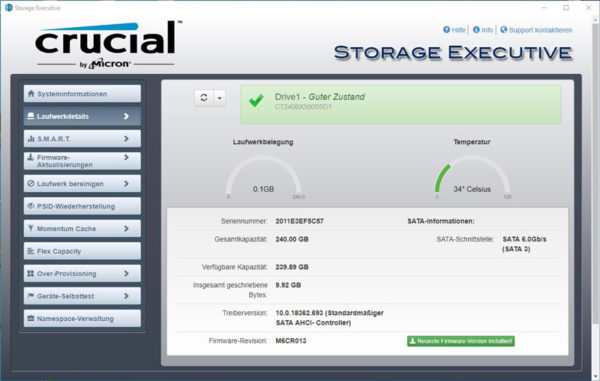
It allows the activation of the Momentum Cache function, which uses the memory as a buffer and can securely erase the SSD with Secure Erase.
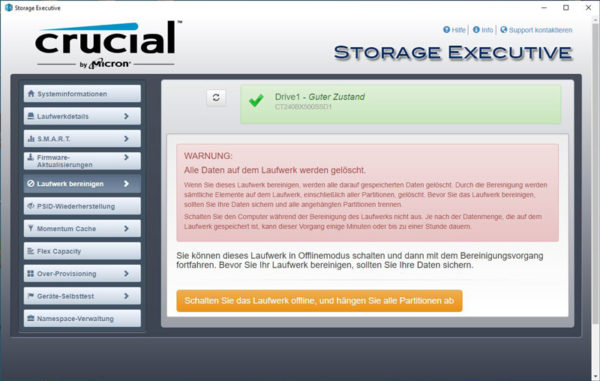
In addition, the Crucial Storage Executive software enables the setting of the over provisioning area.
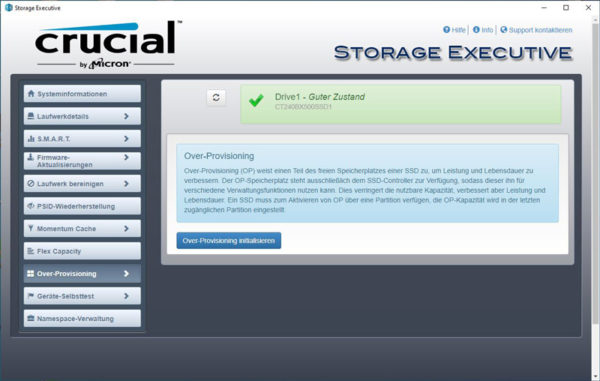
SSD Heat generation …
Before we continue with the benchmark results, we would like to go into the heat development of the BX500 SSD again, which we have already shown with the infrared thermal imaging camera in previous SSD tests. In this test we would like to go into the temperature values of the internal temperature sensors:
In idle, the Crucial BX500’s temperatures, which are read by the internal sensor, are around 30-33°C and even in demanding benchmarks, this rises to a maximum of around 56°C in the 1TB.
After all this information, let’s finally get to the Crucial BX500 240GB, 480GB, 1TB benchmarks.
Crucial BX500 240GB, 480GB und 1TB Setup and test results …

